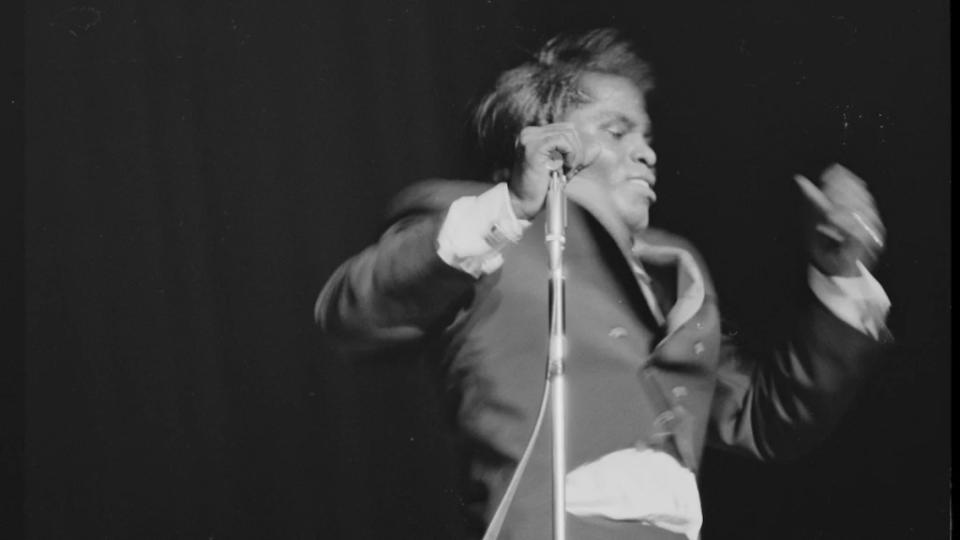‘James Brown: Say It Loud’ Grapples With a Big Question: Was He the Most Important Black Man in America?
Deborah Riley Draper has explored the Black experience in works like the film “Olympic Pride, American Prejudice” and the doc series “The Legacy of Black Wall Street.” But her new four-part series for A&E focuses not on an event but on a titanic, conflicted Black artist, singer James Brown, from his hugely influential music to his troubling history of domestic violence.
What was the appeal of a doc series about James Brown?
My agent called me and she was like, “So, Deb, there’s this music-based docuseries that’s happening, and I wanted to find out if you were interested.” I was like, “Well, tell me a little bit about it,” and she said, “It’s about James Brown.”
Are you kidding? [Laughs] Of course I’m interested. I’m born and raised in Georgia. My mother, my uncles, my father, they all loved James Brown, and my mom even took a train from Savannah and saw James Brown at the Apollo. So the legend of James Brown loomed very large in my family and gave me a way into the story.
I wanted to expand on the idea that came to me when I was flipping through a magazine. He was on the cover of Look, and it said, “Is James Brown the most important black man in America?” I was fascinated by that question, and I wanted to see if I could answer that in my work across these four episodes — could we examine this legacy, this man that was a force and a catalyst, and see if he was in fact the most important Black man in America at that time?
Did you come to a conclusion on that question?
I did. He is certainly one of the most important Black men of the 20th and 21st century. That was the conclusion I came to. Obviously James Brown transformed music and created funk and became this prototype for hip-hop and rap. But also what I learned in the process was his agency and his self-identity and his possession of his Blackness and how it applied to business and entrepreneurship. That was critically important after the assassination of Dr. Martin Luther King: inspiring people to say it loud, “I’m Black and I’m proud,” and changing this grief to determination.
You said you knew James Brown through his music and through your family’s love for him. Did you know much about all the other aspects of his life?
I did, but I approach every story with a clean slate. I am a director who loves to do her own archival research. I love to dig into the primary source material. Before we started shooting, I drove to Augusta to really immerse myself in the places that he crisscrossed in his youth, so that I could understand a little bit about him and where he came from, what the environment looked like, what family life and social life and cultural life looked like. This is a story about a man’s life, so I needed to go unpack it.

The social context of that life was obviously key.
Yeah. I wanted to make sure that we saw his life against the backdrop of a changing Black America. There were a lot of major things happening all at once, and we needed to see how he fit in it and how it fit around him. So I thought it was really important to see our country unfold and see James Brown unfold with it.
The footage of him performing is electrifying, and as an audience member I could watch an hour of that and be satisfied. But do you have to be careful of how much of that footage you use? Because as great as that footage is, it only tells part of the story.
He is electrifying. But we didn’t want to reduce him to his performance because there’s so much more to him. I agree 1,000%, I could watch him all day, but I also wanted to understand the man. This man was literally born dead, and he pulled himself up to be the person that we could watch for endless hours in concert footage. But what did he have to sacrifice? What were the demons? What were the setbacks? Where was the redemption? All of that plays a part in what we see on the stage.
Questlove, who also produced the series with Mick Jagger, has a quote in one episode about how there were a lot of missteps in his life and a lot of genius in his life. How do you find the balance between the two over the course of the series?
It was in the outline that I wrote for this series. You have to unfold a life in its true ups and downs. James Brown is a classic case of that: For 10 straight years he was crushing the charts. But in that same time, he’s being hard on the band. So we have to understand how he engages with them, how he fires people, how he hires people.
We have to see him as a husband and as a father and learn what his family was going through as he became this public figure. It all goes together in the equation of James Brown, and you can’t leave out any of the variables. You have to see all of it to understand him. To understand a human being, if we have 206 bones, that’s what you want to see when you put in the X-ray.
This story first appeared in the Race Begins issue of TheWrap’s awards magazine. Read more from the issue here.
The post ‘James Brown: Say It Loud’ Grapples With a Big Question: Was He the Most Important Black Man in America? appeared first on TheWrap.



